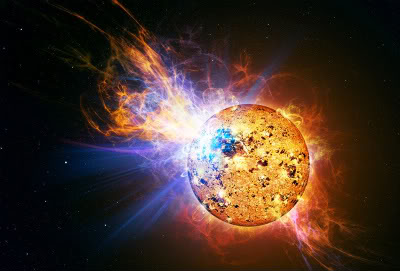Every 11 years, the sun's magnetic activity ramps up, sometimes to a frenzy, causing large sunspots and strong flares.
每隔11年,太陽磁場活動便會加強,有時更會變得狂暴形成巨大的太陽黑子及強烈的太陽風暴。
Right now we should be in the middle of such a solar maximum.
而此時此刻我們應該是出于太陽磁場活動最高峰的階段。
But we've yet to see the expected level of activity.
但我們一直還沒親眼得見所期待的那些活動。
In fact, this latest solar max has been a bit of a dud.
事實上,這一次的太陽活動出現了點小問題。
“Compared to say the five or six previous cycles, this is really weak.”
“同5或6年前的活動周期相比,這次真的很弱。”

That's astronomer Sarbani Basu of Yale University, at the 224th meeting of the American Astronomical Society in Boston on June 3rd.
這是6月3日于波士頓舉行的美國天文協會第224屆會議上耶魯大學天文學家薩巴尼巴斯的原話。
“And then when we went back and started comparing with whatever little data we had of the previous cycles, we realized it may not be that peculiar after all.”
“而當我們再次與之前相關太陽活動周期研究中的任何數據進行比對,我們意識到這次也許沒什么特別的。”
We don't really know yet whether the current cycle is the oddball, or if previous cycles were unusually strong.
我們仍然還是不清楚當前發生的這次周期活動是否是真的奇怪,或者是以前的那些活動異常強烈。
Ground-based telescopes started closely monitoring solar activity only around 60 years ago.
地球上的天文望遠鏡密切監測太陽周期的活動只有60余年的歷史。
And high-quality space-based observations go back just a decade—not even a full solar cycle.
而高質量的空間探測活動也才有十余年歷史—甚至沒有達到一個太陽活動周期的時間。
So astronomers are eagerly awaiting what the future can tell us.
所以天文學家們正熱切期盼著未來的研究。
“It's going to be fun the next few years, I'm looking forward to it.”
“接下來的幾年想來會非常有趣,我拭目以待。”












